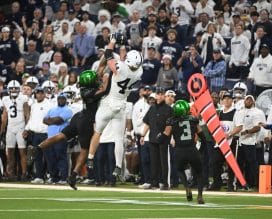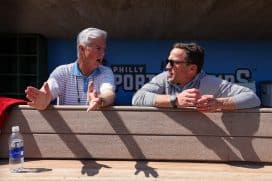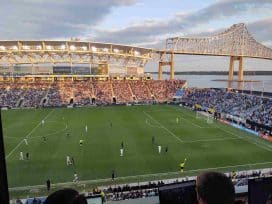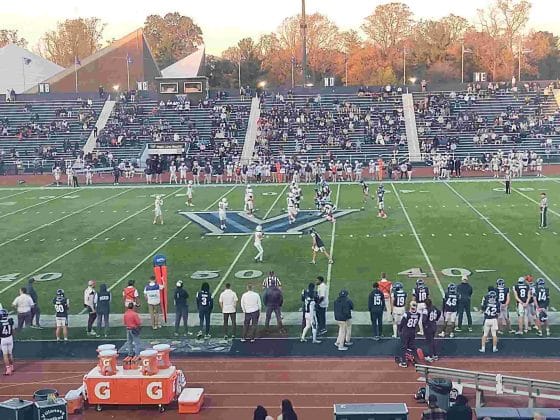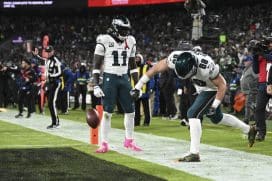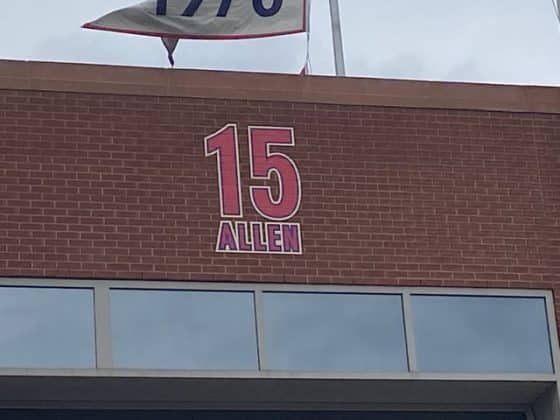Eagles
LeGarrette Blount is not the answer to the Eagles running problem
By: Jesse Larch, Sports Talk Philly Editor
Yes, LeGarrette Blount scored 18 touchdowns last season. Yes, he answered a need when the Eagles signed him. No, he is not the answer to the Eagles running problems.
Doug Pederson has come under fire after leaning heavily on the pass in the first two weeks of the season. There has been an idea that the Eagles have an answer to those running woes in the form of Blount, but that notion is based on overhype from Blount's big season a year ago.
Blount has received more than 200 carries in a season only twice in his career, so the thought that he is an every-down back is severely misinformed. What does it say about Blount, who in his formative years was only treated as a feature back in two seasons? It says that Blount always has been a situational running back.
The Eagles struggled mightily in the red zone and in short yardage situations a season ago. Blount's presence goes a long way in improving the team in that area, but he does not improve much else. The addition of Blount was a good signing, but we cannot act like he was signed to shoulder the load in the backfield.
Last season with New England was an outlier for Blount. He ran for 1,000 yards last season but he averaged less than four yards per carry while doing it. Even the Patriots were privy to Blount's limitations as they often used Dion Lewis and James White to complement Blount because they were aware that he does not have the skillset to stand alone in the backfield.
Blount is there to push the line when you need a yard, he is not there to pick up a big run and drive the offense. He thrives in short yardage situations, but he leaves much to be desired when running between the 20s.
When the Eagles are not getting to the goalline, it is harder to justify using Blount, who does not move the chains in down-and-distance situations. The proof is in the pudding:
Check out the running lane on LeGarrette Blount's second-longest run of the game (5 yards). #Eagles pic.twitter.com/tMh90eLdpI
— Matt Lombardo (@MattLombardoPHL) September 13, 2017
In this clip, Blount has a huge opening, but his lack of quickness through the hole results in him being stopped for five yards. If that ball is handed off to Darren Sproles or even Wendell Smallwood the play goes for 10 yards or more.
That clip has also been an aberration for the Eagles through the first two weeks, because the line has not been especially impressive in opening lanes for the running backs. This is why we saw a heavier dose of Darren Sproles against the Kansas City Chiefs elite defense, because of the elusiveness he possesses.
Blount runs a 4.6 40 yard dash, which is very slow for a running back. There are linebackers who run faster than him. For a guy who would dominate in the second level, he lacks the speed to elude the opposing team's front seven. He cannot elude anybody with that speed, and if the line is not successful in opening up lanes, you are forced to go with a running back who can use quickness to make a play.
Blount was never going to be a feature back in the Eagles offense – or for any offense for that matter. We forget that Blount was not signed until right before the preseason. Why would nobody in the NFL take a chance on a player who scored 18 touchdowns the year prior? Clearly the consensus across the league is that Blount is past his prime.
There is evidence to support that claim as well. Blount's numbers are impressive on the surface, but a closer look reveals a tale of two seasons for Blount a year ago. In the first three months of the season Blount received 212 carries for 869 yards. In the final three months of the season the Patriots moved away from Blount, only running him 122 times for 401 yards, including his playoff performances.
The Eagles do need to run the ball more, but Blount is not the one who should be getting the bulk of the work. Blount needs to be used similarly to how Jerome Bettis got into the endzone for the Pittsburgh Steelers after Duce Staley did the heavy lifting between the twenties. Blount needs to be on the field when the Eagles need a yard or to kill the clock, not when they are trying to drive down the field.
Wendell Smallwood, Darren Sproles, and even Corey Clement have better skill sets to move the offense down the field, and no one is a better option in the red zone than Blount. The Eagles should be using their running backs according to the situation.
Blount has value, but it is not as a running back that you give 20 carries a game to. Blount is a battering ram, meant to drive behind the big uglies for a yard when you need it. He has a place in the Eagles offense and he will help this team win games that they would have lost a year ago, but we need to stop pretending that he is here to be a premier player in this offense.



